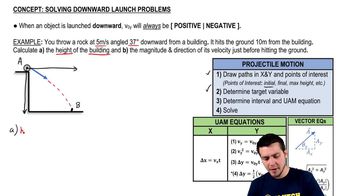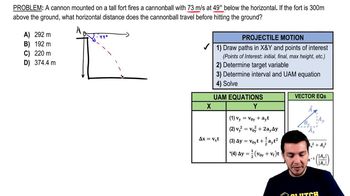Negative (Downward) Launch definitions Flashcards
 Back
BackNegative (Downward) Launch definitions
1/15
Terms in this set (15)
- Projectile MotionThe motion of an object thrown or projected into the air, subject to only the acceleration of gravity.
- Vertical DisplacementThe change in position along the y-axis, often denoted as \(\Delta y\).
- Initial VelocityThe velocity of an object at the start of its motion, often split into x and y components.
- Final VelocityThe velocity of an object just before it stops accelerating, often calculated using motion equations.
- Trigonometric FunctionsFunctions like sine and cosine used to resolve vector components in projectile motion.
- Angle of ProjectionThe angle at which an object is launched, affecting its trajectory and range.
- Horizontal MotionThe motion along the x-axis, typically with constant velocity in projectile problems.
- Negative Y-ComponentIndicates downward motion when resolving initial velocity into components.
- Pythagorean TheoremA method to calculate the magnitude of velocity using its x and y components.
- Inverse Tangent FunctionUsed to determine the angle of velocity direction from its components.
- Acceleration due to GravityThe constant acceleration acting on objects in free fall, approximately -9.8 m/s².
- IntervalThe time period or path segment considered in motion analysis, such as from launch to impact.
- Absolute ValueUsed to express the magnitude of displacement or height as a positive number.
- Clockwise AngleAn angle measured in the clockwise direction from the horizontal axis.
- Delta XThe horizontal displacement or distance traveled along the x-axis.


